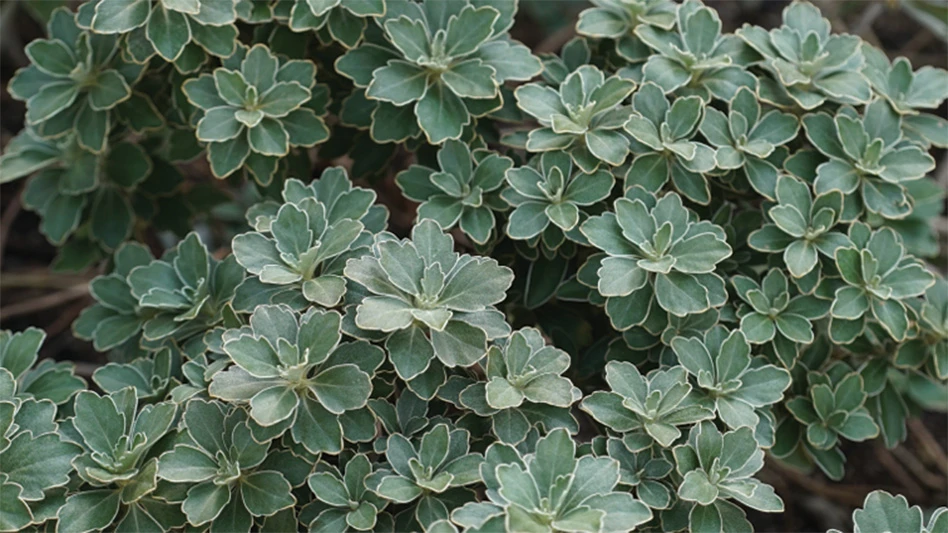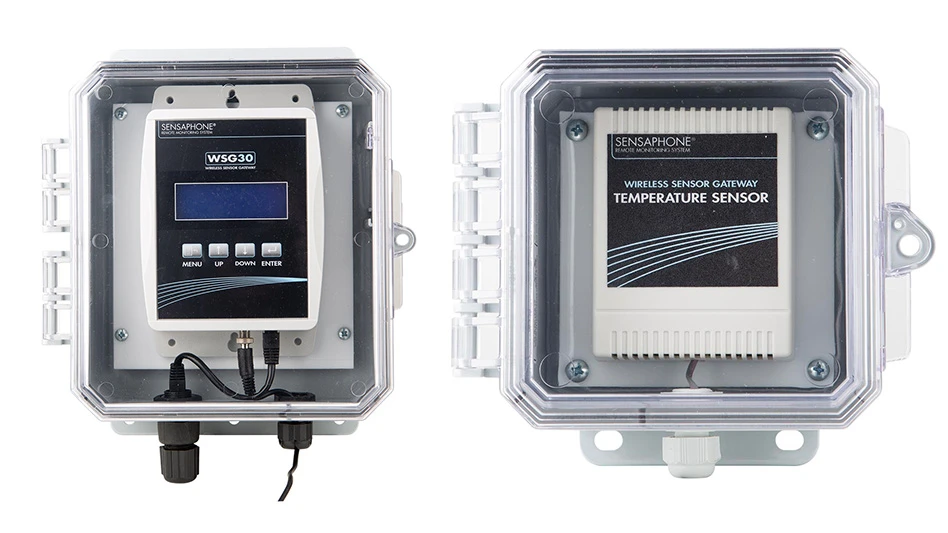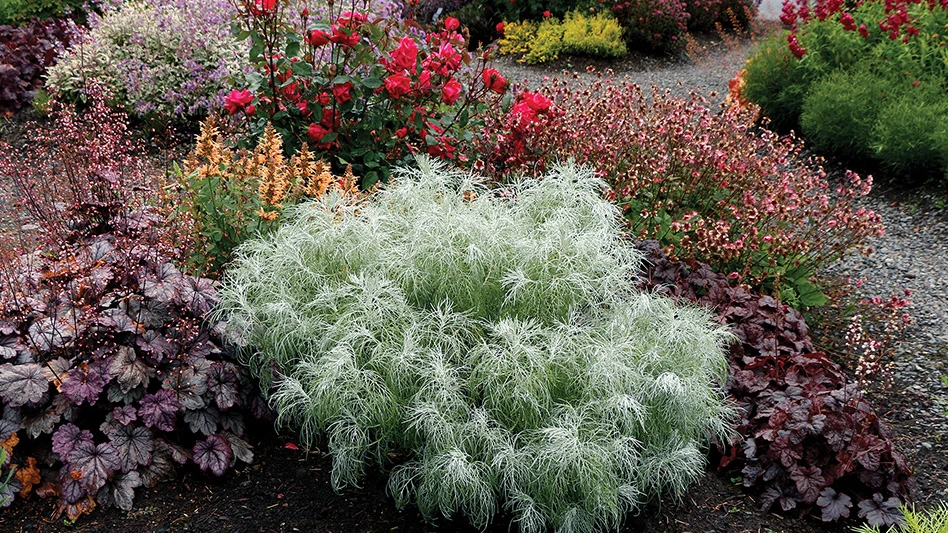 Raymond Cloyd Raymond Cloyd
|
|
Black vine weevil, Otiorhynchus sulcatus, is one of the most commonly encountered weevil species in horticultural cropping systems feeding on more than 200 different plant species. A native of Europe, it was first reported in the United States in 1831. Black vine weevil is distributed extensively throughout most of northern North America, and is primarily spread by the transport/shipping of infected greenhouse or nursery containerized plant material. The larval stage causes the most significant damage by feeding on the plant root system whereas adults feed on plant leaves causing mostly cosmetic damage. However, the leaf-feeding (leaf notching) damage caused by adults, if extensive, may result in an economic loss by affecting marketability. Many trees, shrubs, and perennials are susceptible to attack by this weevil including astible, azalea, begonia, bergenia, cyclamen, epimedium, geranium, heuchera, hosta, rhododendron and yew.
Life cycle
The life cycle consists of an egg, larva, pupa and adult. Adult activity varies depending on geographic location, with adults typically present from spring to late-summer. Adults are active at night (nocturnal), and create distinct notches on the margins of plant leaves during feeding. Adults are approximately 1½ inches long, brown to black, with small patches of yellow to orange hairs on the abdomen or wing covers. In addition, they have a noticeable snout (mouthpart). They also have elbowed or bent antennae. Black vine weevil adults cannot fly because the wing covers are fused together. The larvae are ¼ to ½ inch long, legless, white to cream-colored with a brown head, and are covered with fine hairs. All adult black vine weevil females are parthenogenetic, which means that they do not have to mate to reproduce. In fact, no black vine weevil males have ever been found. Adults hide during the day under containers, in debris laying on the soil underneath benches, or in cracks in the soil surface. Adult females can lay up to 300 eggs during their lifetime (up to 12 months). Eggs are laid in cracks and crevices in the growing medium surface or in the upper 1-2 inches. Eggs hatch and larvae initiate feeding. The rate of larval development is dependent on temperature with growing medium temperatures between 70°F and 75°F ideal for larval activity. Larvae feed on plant root hairs, larger roots, and can also girdle the crown, which inhibits the movement of water and nutrients to plant leaves.
 In addition, they will tunnel into the stems of certain plants once most of the roots have been destroyed. This can lead to plant stunting, reduced plant vigor, leaf yellowing, and eventually plant death. The larval stage can last up to 12 months. Older larvae are C-shaped due to the thickening of the thoracic segments. There is usually one generation per year but in greenhouses and depending on temperature, several overlapping generations with different life stages may occur. Black vine weevils, in general, overwinter as a larva within cells in the growing medium that migrate to the bottom of containers; however, they have been known to overwinter as adults in areas with mild winter temperatures. Overwintering larvae eventually transition into a pupae stage from which adults will emerge. In addition, they will tunnel into the stems of certain plants once most of the roots have been destroyed. This can lead to plant stunting, reduced plant vigor, leaf yellowing, and eventually plant death. The larval stage can last up to 12 months. Older larvae are C-shaped due to the thickening of the thoracic segments. There is usually one generation per year but in greenhouses and depending on temperature, several overlapping generations with different life stages may occur. Black vine weevils, in general, overwinter as a larva within cells in the growing medium that migrate to the bottom of containers; however, they have been known to overwinter as adults in areas with mild winter temperatures. Overwintering larvae eventually transition into a pupae stage from which adults will emerge.
Protect new transplants
Newly transplanted plant material is highly susceptible to black vine weevil damage, even small populations, due to the lack of an established root system. Damage will vary depending on the number of larvae and plant size (age). In fact, one larva/plant has been reported to kill cyclamen whereas three larvae were enough to kill a rhododendron. Established plants may be more tolerant of black vine weevil larval damage compared to young plants because the root system is greater in biomass and may be able to withstand feeding without adverse effects on growth.
Scouting for black vine weevil adults involves looking under leaf debris or soil underneath benches, and checking for adult activity in the evening using a flashlight. It’s important to remove susceptible plants from containers and inspect for larvae that may be on the outside edge of the root system or inside the root ball. Physical management strategies include collecting/removing adults by hand during the evening to reduce high populations and before females lay eggs, and/or placing sticky bands on plant stems, which restricts adults’ movement to and from feeding sites.
Control measures
Drench applications of insecticides and biological control agents such as beneficial nematodes may be used to alleviate problems with this pest. Treatments should be made in spring (March through May) to kill larvae and late summer through fall (August through November) to kill larvae after eggs have been laid. One common strategy involves incorporating insecticides with the active ingredient bifenthrin into the growing medium, which may provide long-residual activity although this may be contingent on the growing medium type. Late summer to fall applications are recommended over spring applications due to the larger size of the larvae that occur in the spring. Furthermore, lower concentrations of insecticides may be used since the larvae are smaller in late summer through fall. Younger larvae, in general, tend to be more susceptible to insecticide applications. Additional insecticides are labeled for use against the black vine weevil including those containing the active ingredient imidacloprid. Producers must be cognizant of adult activity so as to time insecticide applications accordingly. Repeat applications may be needed.Always be sure to read the insecticide label to determine that it can legally be used against the black vine weevil.
 Beneficial nematodes are applied as a drench to the growing medium where the temperature should be between 50°F-85°F. However, the beneficial nematode species, Steinerema kraussei, which can tolerate growing medium temperatures of 41°F, may be more effective in regulating black vine weevil larval populations than other species because black vine weevil larvae tend to be more active under cooler temperatures. Multiple applications may be required depending on the extent of the larval infestation and age of the larvae. Younger larvae can be more difficult to kill with beneficial nematodes. In addition, it’s important to irrigate the growing medium the day before making applications of beneficial nematodes in order to provide a moist environment, which is conducive for survival. Another option is drench applications of the beneficial fungus, Metarhizium anisopliae to the growing medium. This fungus has been shown to infect both larvae and adults. Beneficial nematodes are applied as a drench to the growing medium where the temperature should be between 50°F-85°F. However, the beneficial nematode species, Steinerema kraussei, which can tolerate growing medium temperatures of 41°F, may be more effective in regulating black vine weevil larval populations than other species because black vine weevil larvae tend to be more active under cooler temperatures. Multiple applications may be required depending on the extent of the larval infestation and age of the larvae. Younger larvae can be more difficult to kill with beneficial nematodes. In addition, it’s important to irrigate the growing medium the day before making applications of beneficial nematodes in order to provide a moist environment, which is conducive for survival. Another option is drench applications of the beneficial fungus, Metarhizium anisopliae to the growing medium. This fungus has been shown to infect both larvae and adults.
Cloyd is a professor and extension specialist in ornamental entomology/integrated pest management for the Department of Entomology at Kansas State University. You can write Raymond at rcloyd@ksu.edu.
|


 In addition, they will tunnel into the stems of certain plants once most of the roots have been destroyed. This can lead to plant stunting, reduced plant vigor, leaf yellowing, and eventually plant death. The larval stage can last up to 12 months. Older larvae are C-shaped due to the thickening of the thoracic segments. There is usually one generation per year but in greenhouses and depending on temperature, several overlapping generations with different life stages may occur. Black vine weevils, in general, overwinter as a larva within cells in the growing medium that migrate to the bottom of containers; however, they have been known to overwinter as adults in areas with mild winter temperatures. Overwintering larvae eventually transition into a pupae stage from which adults will emerge.
In addition, they will tunnel into the stems of certain plants once most of the roots have been destroyed. This can lead to plant stunting, reduced plant vigor, leaf yellowing, and eventually plant death. The larval stage can last up to 12 months. Older larvae are C-shaped due to the thickening of the thoracic segments. There is usually one generation per year but in greenhouses and depending on temperature, several overlapping generations with different life stages may occur. Black vine weevils, in general, overwinter as a larva within cells in the growing medium that migrate to the bottom of containers; however, they have been known to overwinter as adults in areas with mild winter temperatures. Overwintering larvae eventually transition into a pupae stage from which adults will emerge. Beneficial nematodes are applied as a drench to the growing medium where the temperature should be between 50°F-85°F. However, the beneficial nematode species, Steinerema kraussei, which can tolerate growing medium temperatures of 41°F, may be more effective in regulating black vine weevil larval populations than other species because black vine weevil larvae tend to be more active under cooler temperatures. Multiple applications may be required depending on the extent of the larval infestation and age of the larvae. Younger larvae can be more difficult to kill with beneficial nematodes. In addition, it’s important to irrigate the growing medium the day before making applications of beneficial nematodes in order to provide a moist environment, which is conducive for survival. Another option is drench applications of the beneficial fungus, Metarhizium anisopliae to the growing medium. This fungus has been shown to infect both larvae and adults.
Beneficial nematodes are applied as a drench to the growing medium where the temperature should be between 50°F-85°F. However, the beneficial nematode species, Steinerema kraussei, which can tolerate growing medium temperatures of 41°F, may be more effective in regulating black vine weevil larval populations than other species because black vine weevil larvae tend to be more active under cooler temperatures. Multiple applications may be required depending on the extent of the larval infestation and age of the larvae. Younger larvae can be more difficult to kill with beneficial nematodes. In addition, it’s important to irrigate the growing medium the day before making applications of beneficial nematodes in order to provide a moist environment, which is conducive for survival. Another option is drench applications of the beneficial fungus, Metarhizium anisopliae to the growing medium. This fungus has been shown to infect both larvae and adults.




